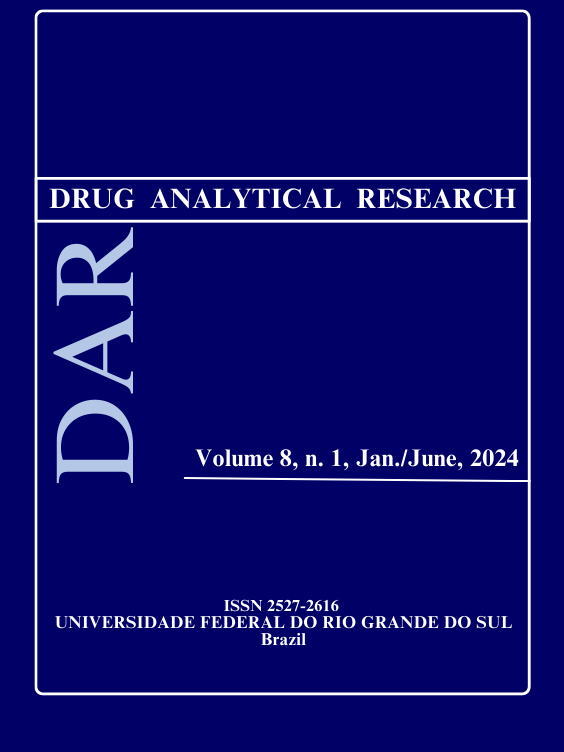Development and validation of HPLC and GC methods for quantification of cannabinoids and terpenes extracted by ultrasound assisted extraction technique
DOI:
https://doi.org/10.22456/2527-2616.139666Keywords:
HPLC analysis, gas chromatography, Cannabinoids, terpenes, quantificationAbstract
Cannabis exhibits a wide array of therapeutic effects due to its diverse and potent compounds. High-performance liquid chromatography (HPLC) and gas chromatography-mass spectrometry (GC-MS) are the primary techniques used to quantify and qualify cannabinoids and terpenes in cannabis. This paper rigorously validates HPLC and GC-MS methods for quantifying cannabinoids and terpenes in cannabis plants. Cannabinoids and terpenes were extracted using an optimised ultrasound assisted extraction (UAE) method. The HPLC and GC-MS methods were validated by assessing linearity, limit of detection (LOD), limit of quantification (LOQ), recovery, precision (inter-day and intra-day), accuracy (inter-day and intra-day), and matrix effect for 12 cannabinoids and 30 terpenes using appropriate standards. The HPLC and GC results fell within acceptable ranges (for HPLC, recovery between 73-121%, precision, accuracy and matrix effect all were below 10%; and for GC, recovery between 79-91%, precision, accuracy and matrix effect all were below 10%) demonstrating the accuracy and reliability of the validated method. The findings of this study can be used effectively to measure these important compounds in cannabis samples, facilitating quality control and standardisation of cannabis-based products for therapeutic applications.
Downloads
Downloads
Published
How to Cite
Issue
Section
License
Copyright (c) 2024 Drug Analytical Research

This work is licensed under a Creative Commons Attribution-NonCommercial-ShareAlike 4.0 International License.
The Copyright holder of manuscripts published is Drug Analytical Research. Authors who publish with this journal are able to enter into separate, additional contractual arrangements for the non-exclusive distribution of the journal's published version of the work (e.g., post it to an institutional repository or publish it in a book), with an acknowledgement of its initial publication in this journal.
Licensing:
Creative Commons Attribution-NonCommercial-ShareAlike 4.0 International License
Users are allowed to read, download, copy, distribute, print, search, or link to the full texts of the articles, or use them for any other lawful purpose, without asking prior permission from the publisher or the author.



